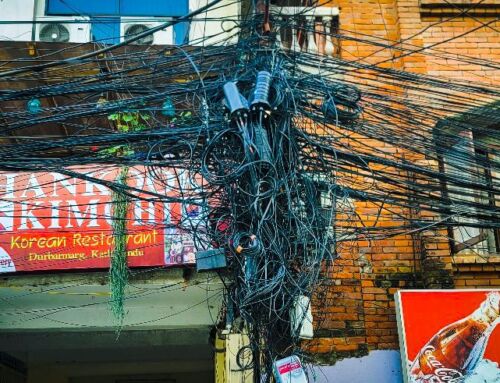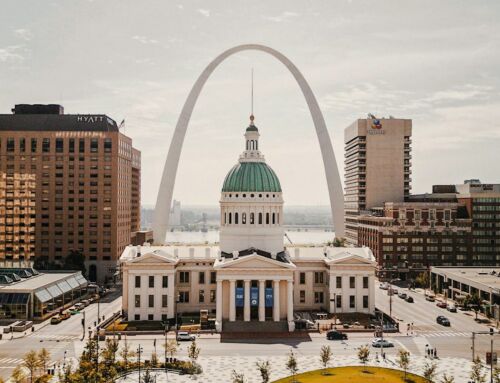View by Topic
Recent Articles
-
Federal Government Finalizes New Efficiency Standards for LightbulbsSaturday, April 13th, 2024
-
2024 IECC is Final After Addressing Preemption IssuesSaturday, April 6th, 2024
-
Settlement Portends Broad Failure in Attempts to Ban Natural GasSaturday, March 30th, 2024
-
SEC Climate Disclosure Rule Stay and Venue Now in the 8th CircuitSaturday, March 23rd, 2024
-
EV Charger Data ApocalypseSaturday, March 16th, 2024
View by Month/Year
“Green Building Law Update” Headlines
Recent Articles & News from
Stuart Kaplow’s blog
at GreenBuildingLawUpdate.com
- Shedding Light on the Future: The Evolution of Lightbulbs in the Wake of New Energy Efficiency Standards April 14, 2024
- 2024 International Energy Conservation Code is Final After Addressing Preemption April 7, 2024
- Settlement Portends Broad Failure in Attempts to Ban Natural Gas March 31, 2024
- SEC Climate Disclosure Rule Stay and Venue Now in the 8th Circuit March 24, 2024
Subscribe to the Green Building Law Update!
Stuart Kaplow brings his expertise and extensive experience to the table with his unique digital publication, "Green Building Law Update". Subscribers receive regular updates to keep them informed about important issues surrounding Environmental Law, Green Building & Real Estate Law, as well as the emerging demand for Environmental Social Governance (ESG).
Get fresh content through the lense of Stuart Kaplow's cutting-edge expertise, innovative commentary and insider perspective. Don't miss another issue! Subscribe below.
Resilience in Building is the Hot New Topic in Real Estate
In recent days, Mayor Bloomberg unveiled a resilience plan with 250 action items to increase the resilience of buildings and infrastructure across New York in the wake of Hurricane Sandy. Governor O’Malley of Maryland issued an executive order with the single resilience edict that all new government building be raised a minimum of 2 feet of freeboard above the 100 year floodplain. And Mayor Davis of Moore, Oklahoma introduced a resilience ordinance modifying the building code to require safe rooms in every building.
But the current surge in activity in this arena is tenants seeking building resilience and redundancy in Class A building commercial leases.
What is Resilience?
The dictionary definition of resilience is a noun, meaning 1. the ability to bounce back after change or adversity, or 2. capability of preparing for, responding to, and recovering from difficult conditions.
While there is no single accepted definition for the term associated with the real estate marketplace, resilience is rapidly evolving to describe the capability to recover quickly and resume activities after catastrophes. Resilience may involve redundancies in sizing HVAC equipment for increasingly hotter weather, building systems located not in a basement but above the floodplain and more.
The Risks
Buildings face a variety of risks including the interruption of power supply, increasingly the result of natural catastrophes driven in large measure by so much of the population living in coastal areas. Now and into the future the risks involve:
Average precipitation. Average precipitation across the United States has increased since 1900. The Midwest, southern Great Plains, and Northeast have had the largest increases. Portions of the Southeast, Southwest, and the Rocky Mountain states, however, have had dramatic decreases resulting in drought.
Extreme precipitation. Heavy downpours are increasing in most regions, with the largest increases occurring in the Midwest and Northeast. Further increases in frequency and intensity of extreme precipitation flash flooding are pro¬jected.
Extreme weather. Weather events have become more frequent and intense in some regions, including high winds, heat waves, and droughts. The prevalence of increased intensity of wind and heat has been in western regions.
Hurricanes. There has been an increase in overall strength of hurricanes and the number of strong hurricanes in the North Atlantic since 1980. The inten¬sity of hurricanes is projected to increase as is the damage to buildings.
Sea levels. The global sea level has risen by about eight inches since reliable record keeping began in 1880. It is projected to rise at least an additional one foot by 2100 putting Billions of dollars of real estate below high tide.
Temperature. The average temperature in the U.S. has risen about 1.5 degrees Fahrenheit since 1895, with 80 percent of this increase occurring since 1980.
But be clear, this is not about global warming. This is about the new trend of increased property damage and disruptions associated with storms including flooding. This is about managing the risk and resilience of real estate. This is about adapting the built environment so that the business of buildings can thrive.
Government Resilience in Building
Government can drive resiliency and strengthen new and substantially rebuilt structures in the 100 year floodplain including by implement zoning changes to encourage the lowest habitable spaces to be 2 feet freeboard by allowing more flexibility in the measurement of building height of elevated building and by allowing parking to be placed underneath and not contributing to height.
Government can modify codes so solar photovoltaic and other on site renewable energy systems will operate when the utility power is out. Today most codes require a disconnect when utility power is not available under an outdated notion of protecting first responders.
Government can modify codes to encourage building envelopes with better wind resiliency and greater insulation properties, including by being more flexible in floor area measurements in the instance of thicker wall insulation.
Government can incentivize hardening of cell sites by easing permitting for those communication facilities to be constructed to withstand weather related impacts.
Government can repurpose storm water laws to allow buildings to construct onsite underground infrastructure to manage flooding by storm water (in lieu of other priorities for water quality).
Resilience by Building Owners
Owners can elevate building equipment and utilities above 2 feet freeboard and otherwise harden, domestic water spigots (with common access), diesel fuel tanks for generators and other system critical components.
Causing electric lines to be placed underground increases reliability.
Installing backup systems, including generators with appropriately sized fuel tanks and contracts for fuel delivery at time of catastrophe.
And in new building, passive design principals from natural ventilation to significant daylighting and from onsite renewable energy to rain water capture, all increase building resilience.
Everyone Can Do This Now
A widely discussed major Manhattan leasing deal to a large professional services firm was sealed when the landlord provided an uninterruptible power supply by a surge protector with a battery backup and power saving master outlet for each work station. This commercially available solution for instantaneous reaction to power interruption for computers costs less than $60 a unit and results in cost savings by shutting off power to idle peripherals when the computer is in sleep mode that pay for the surge protector in less than 2 years.
Additionally, that uninterruptible power supply satisfies two redundancy items on the Energy STAR data checklist when connected to the software packaged with the surge protector allowing for remote shut off of power to reduce plug loads (which can be done by a system administrator daily at the close of business).
Conclusion
There is a convergence between sustainability and resilience. The green building strategies advanced by LEED® in large measure support resilience.
Building resilience is the hot new topic in real estate because tenants are increasingly seeking resilience in Class A building leases. As in most markets today where a building must be LEED certified to be classified Class A, it will not be long before building resilience is required for a building to be Class A and otherwise command the highest rents.
We have experience with resilience having been tasked as an owner’s representative with setting up project teams of engineers, architects, general contractors and others. Throughajhon Sustainable Systems Integrator, the independent non law environmental consulting business affiliate of our law firm we have had complete oversight over projects to complete the due diligence, design, budgeting and construction administration.
If you have questions about building resilience or sustainability including Green building, do not hesitate to email Stuart Kaplow at skaplow@stuartkaplow.com or give him a call at 410-339-3910.









